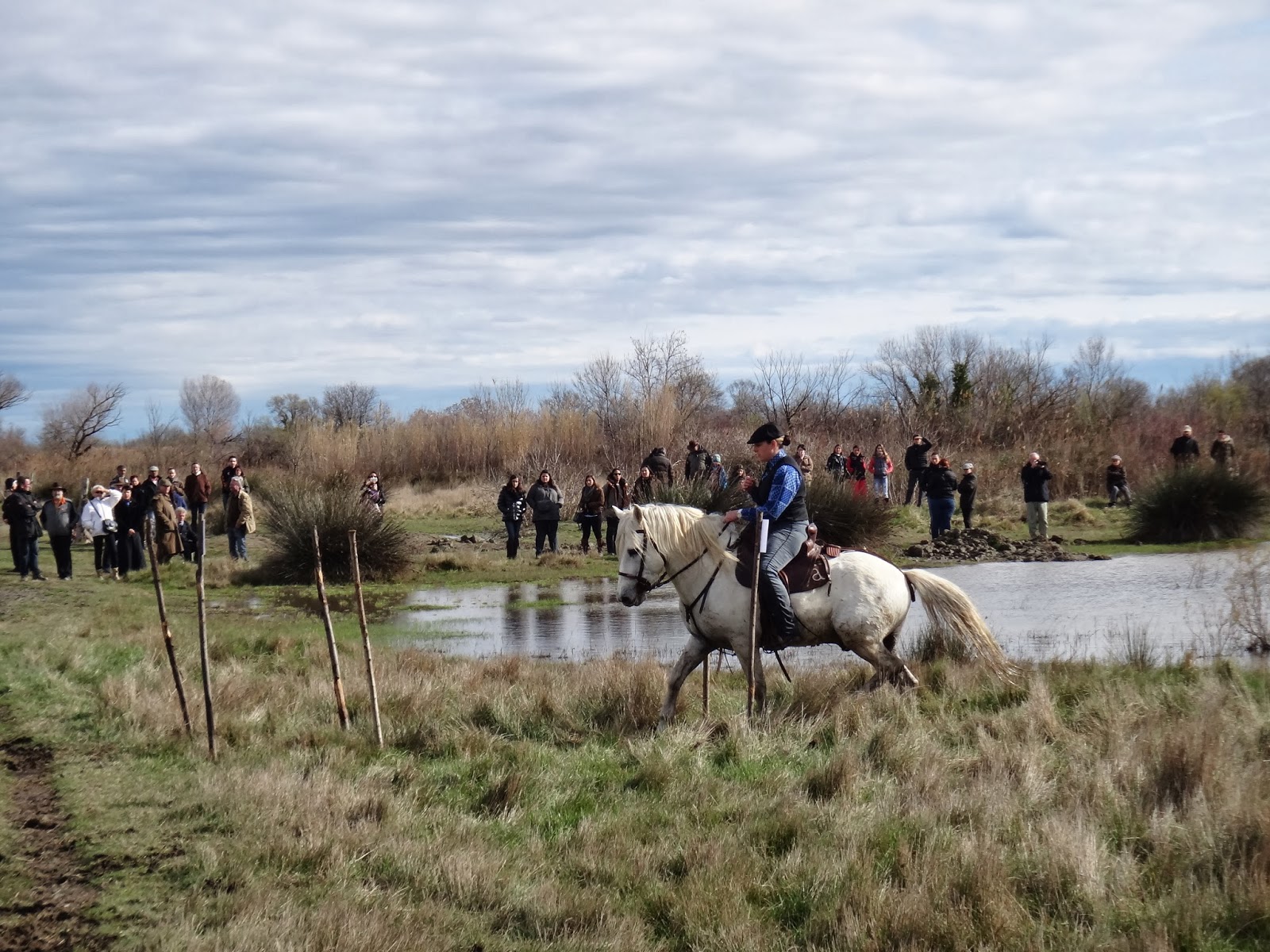...With
my saddle & the two dogs packed in the back of the car, i left for France
in search of few more experiences and dryer weather...
Worldwide
there exist 7 species of wild equine spread between Asia and Africa.
Of these 7
species, Equus Kiang and the Equus Quagga, also known as the Zebra of the
Southern African plains, are not in danger of extinction. However, the Equus Grevyi
(Zebra of Grevy), the Equus Zebra (Zebra of the mountains), the Equus Africanus
(The wild donkey of Africa), the Equus Hemionus & last but not least the
Equus Ferus Przewalski, also known as the horse of Przewalski, are all endangered
species.
On
my way to the Camargue, i stopped over to the Cause Mejean, a calcareous plateau of the National Park of the
Cevennes, situated in the South tip end of the Massif Central. There, i
observed the critically endangered horse of Przewalsky. Today only 1,872
Przewalsky remain worldwide. They have been extinct in the wild from 1970 to 2008. In 2008 a
few selected ones have been reintroduced to the wild thanks to TAKH, the association for the horse of Przewalski. Although the majority of Przewalski
are seen in small paddock in Zoos, it is in the French reserve of the Cevennes
that 40 Przewalskis are let to breed as close to their natural habitat as
possible. The aim of this program is to release them into the wilderness of
Mongolia in Central Asia. The TAKH program is let by scientist Claudia Feh.
 |
| ...In the Cevennes National Park... |
 |
| ...on my way... |
 |
| ...to the... |
 |
...Causse Mejean, a calcareous plateau.
The objectives of the project is to as much saving the Przewalski
as to preserve the natural habitat of the Causse Mejean.
|
 |
The grazed grassland of the Causse harbours a typical and rare flaura
and fauna of the continental steppes.
Yellow Pheasant's eyes, Adonis Vernalis, Alpine Aster, feather grass,
Stippa pennata, Little Bustard, Tetrax, Stone Curlew, Burinus oedicnemus,
Hoopoe, Upupa epops, Griffon & Black Vultures, Gyps fulvus & Aegypius monachus,
Golden Eagles & Aquila chrysaetos. |
 |
| Axle & Ruby |
 |
A lone male is looking at us
|
Przewalski
is a wild horse and should not be mistaken with feral horses such as the Mustangs and Brumbies.
Mustangs were domesticated horses turned loose and consequently returned to
their wild self. The Mustang belongs to the specie of the Equus Caballus.
The Przewalski has never been successfully domesticated and therefore never been ridden. It is a truly wild horse of CentralAsia which is also
believed to have lived in Europe during the ice age about 10,000 years ago (see
Lascaux fresco). The Przewalski horse belongs to the specie of the Equus Ferus Przewalski.
The Przewalski has 66 chromosomes, 2 more chromosomes than the
domesticated horse (Equus Caballus) including the Mongol pony such as the one Genghis Khan used to ride. Hybrids (Caballus X Ferus) can have 66, 65 or 64 chromosomes and are fertile.
Although a
couple of chromosomes does not change the composition of their genes, they
change their disposition. Przewalski horses shed the hair in their manes and
tails each spring hence the Mohican-like mane they tend to have. This
should not be mistaken with the Fjord pony whose mane is often cut short to
look spiky ressembling the mane of a Przewalski.
Twice,
over two days i had the chance to observe these 40 horses. As the aim of the stud
is to release the horses to Mongolia, the reserve has for policy to keep the
horses as far away from human contact as possible. With a pair of
binoculars i walked alongside the fenced perimeter of the 1,000 acres reserve
and was lucky enough to catch a glimpse of the various groups. i was accompanied by the head Ranger there who was kind enough to discuss the dynamic of the herd
beforehand.
Currently there are 6 bands; 3 headed by one alpha stallion each and
3 small bands of bachelors. i observed similar behaviours as those of the Koniks
at Wicken Fen in Cambridgeshire where i live. The similar behaviours were: all grazing or all resting in the direction of the blowing wind; self-grooming & scratching against rocks and so on. At one stage i walked a few
steps towards them and half of them bolted. On the second day i observed a lone
male bachelor which was resting but once it saw me it became very curious and
agitated. In both instances i was very far away from them. Their behaviours showed
that their sense of preservation (and most certainly their lack of contact with
human) is very strong.
In
2004, 12 horses from France were flown to Mongolia and released. One year
later, 10 others joined them. They now leave in Mongolia over 34,000 acres. They
still live together as family groups as initially established in France. In
2008, 5 foals were born and as of today there are no more plans to transport
any more horses from France to Mongolia. The French Przewalski are kept as a
population reservoir able to intervene in case something catastrophic should
happen to the ones already reintroduced to Mongolia. For more information on this
important and fascinating project consult www.takh.org
which is translated in French, English and Mongolian.
 |
| TAKH means wild horse in Mongolian. |
Thank you to Mrs Feh and to the whole team at TAKH for your huge conservation effort (and for having me).
















.JPG)


.JPG)
















